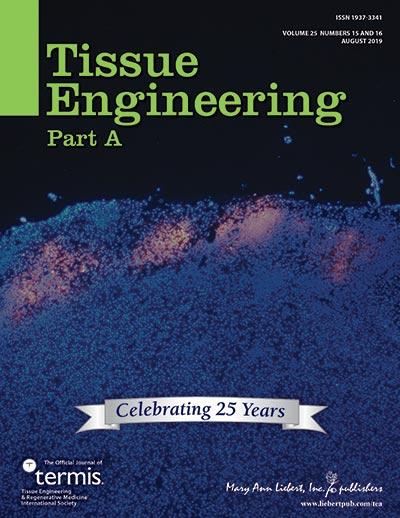
Credit: Mary Ann Liebert, Inc., publishers
New Rochelle, NY, September 17, 2019-Short bowel syndrome is a debilitating condition with few treatment options, and these treatments have limited efficacy. The ability to grow artificial intestine is a coveted goal with the potential to profoundly improve this outlook. Working toward this target, researchers have created an artificial scaffold that mimics the native small intestinal architecture, complete with villi; this scaffold can incorporate intestinal epithelial cells and be successfully implanted in mice while retaining structural integrity. The work is reported in Tissue Engineering, a peer-reviewed journal from Mary Ann Liebert, Inc., publishers. Click here to read the article for free through October 17, 2019.
David J. Hackam, Johns Hopkins School of Medicine, Baltimore, MD, and colleagues present their results in an article titled “Development of Intestinal Scaffolds that Mimic Native Mammalian Intestinal Tissue.” The authors used polyglycerol sebacate to fabricate scaffolds and showed that they have mechanical properties similar to native intestine, are stable in control and digestive media, and can be infiltrated with intestinal epithelial cells for functional intestinal recreation attempts. An additional feature of the scaffold material is its amenability to the future integration of drug and growth factor delivery mechanisms.
“Dr. Hackam and his team at Johns Hopkins, Cornell, and Walter Reed, have beautifully mimicked the microarchitecture of native small intestine using a degradable, poly(glycerol sebacate) scaffold, showing that their approach supports functional intestinal epithelial cells for weeks after implantation,” says Tissue Engineering Co-Editor-in-Chief John P. Fisher, PhD, Fischell Family Distinguished Professor & Department Chair, and Director of the NIH Center for Engineering Complex Tissues at the University of Maryland. “The work has tremendous translational potential.”
###
About the Journal
Tissue Engineering is an authoritative peer-reviewed journal published monthly online and in print in three parts: Part A, the flagship journal published 24 times per year; Part B: Reviews, published bimonthly, and Part C: Methods, published 12 times per year. Led by Co-Editors-in-Chief Antonios G. Mikos, PhD, Louis Calder Professor at Rice University, Houston, TX, and John P. Fisher, PhD, Fischell Family Distinguished Professor & Department Chair, and Director of the NIH Center for Engineering Complex Tissues at the University of Maryland, the Journal brings together scientific and medical experts in the fields of biomedical engineering, material science, molecular and cellular biology, and genetic engineering. Leadership of Tissue Engineering Parts B (Reviews) and Part C (Methods) is provided by Katja Schenke-Layland, PhD, Eberhard Karls University, Tübingen, Heungsoo Shin, PhD, Hanyang University; and John A. Jansen, DDS, PhD, Radboud University, and Xiumei Wang, PhD, Tsinghua University respectively. Tissue Engineering is the official journal of the Tissue Engineering & Regenerative Medicine International Society (TERMIS). Complete tables of content and a sample issue may be viewed on the Tissue Engineering website.
About the Publisher
Mary Ann Liebert, Inc., publishers is a privately held, fully integrated media company known for establishing authoritative peer-reviewed journals in many promising areas of science and biomedical research, including Stem Cells and Development, Human Gene Therapy, and Advances in Wound Care. Its biotechnology trade magazine, GEN (Genetic Engineering & Biotechnology News), was the first in its field and is today the industry’s most widely read publication worldwide. A complete list of the firm’s 80 journals, books, and newsmagazines is available on the Mary Ann Liebert, Inc., publishers website.
Media Contact
Kathryn Ryan
[email protected]
Original Source
https:/
Related Journal Article
http://dx.




